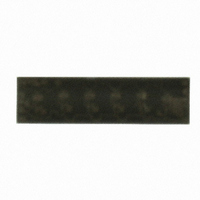AMMC-5026-W10 Avago Technologies US Inc., AMMC-5026-W10 Datasheet - Page 7

AMMC-5026-W10
Manufacturer Part Number
AMMC-5026-W10
Description
IC MMIC AMP TWA GAAS 2-35GHZ
Manufacturer
Avago Technologies US Inc.
Type
General Purposer
Specifications of AMMC-5026-W10
Function
Amplifier
Noise Figure Typ
4.3dB
Supply Current
350mA
Supply Voltage Range
7V
Frequency Max
35GHz
Frequency Min
2GHz
Supply Voltage Max
10V
Gain
10.5dB
Number Of Channels
1
Frequency (max)
35GHz
Output Power
24@10000MHzdBm
Power Supply Requirement
Single
Single Supply Voltage (max)
10V
Package Type
Chip
Dual Supply Voltage (min)
Not RequiredV
Dual Supply Voltage (typ)
Not RequiredV
Dual Supply Voltage (max)
Not RequiredV
Lead Free Status / RoHS Status
Lead free / RoHS Compliant
Lead Free Status / RoHS Status
Lead free / RoHS Compliant, Lead free / RoHS Compliant
Other names
516-1846
AMMC-5026-W10
AMMC-5026-W10
Available stocks
Company
Part Number
Manufacturer
Quantity
Price
Part Number:
AMMC-5026-W10
Manufacturer:
AVAGO/安华高
Quantity:
20 000
Biasing and Operation
AMMC-5026 is biased with a single positive drain supply
(V
bias conditions for the AMMC-5026 is V
150 mA for best overall performance. Open circuit is the
default setting for the V
Figure 17 shows a typical bonding configuration for the 2
to 35 GHz operations. In this case, auxiliary drain and V
capacitors (>0.5 µF) are used for low frequency (below
2 GHz) performance. Input and output RF ports are DC
coupled; therefore, DC decoupling capacitors are required
if there are DC paths.
The auxiliary gate and drain contacts are used for low
frequency performance extension below 1 GHz. When
used, these contacts must be AC coupled only. (Do not
attempt to apply bias to these pads.)
Ground connections are made with plated through-holes
to the backside of the device.
Figure 15. AMMC-5026 Schematic.
7
Aux Vd
d
) and a negative gate supply (V
Vd
RF Input
g2
biasing.
g1
). The recommended
dd
= 7 V and I
dd
g1
=
Assembly Techniques
The backside of the MMIC chip is RF ground. For microstrip
applications the chip should be attached directly to
the ground plane (e.g. circuit carrier or heatsink) using
electrically conductive epoxy
the amount should be just enough to provide a thin fil-
let around the bottom perimeter of the die. The ground
plane should be free of any residue that may jeopardize
electrical or mechanical attachment. Caution should be
taken to not exceed the Absolute Maximum Rating for
assembly temperature and time.
Thermosonic wedge bonding is the preferred method for
wire attachment to the bond pads. The RF connections
should be kept as short as possible to minimize inductance.
Gold mesh or double-bonding with 0.7 mil gold wire is
recommended.
Mesh can be attached using a 2 mil round tracking tool
and a tool force of approximately 22 grams with an ul-
trasonic power of roughly 55 dB for a duration of 76 ± 8
mS. A guided wedge at an ultrasonic power level of 64
dB can be used for the 0.7 mil wire. The recommended
wire bond stage temperature is 150 ± 2°C.
The chip is 100 mm thick and should be handled with
care.
This MMIC has exposed air bridges on the top surface.
Handle at edges or with a custom collet (do not pick up
die with vacuum on die center.)
This MMIC is also static sensitive and ESD handling precau-
tions should be taken.
Notes:
1. Ablebond 84-1 LM1 silver epoxy is recommended.
2. Eutectic attach is not recommended and may jeopardize reliability
of the device.
[1,2]
. For conductive epoxy,
RF Output
V g 1
Aux Vg2
Aux V g 1




















